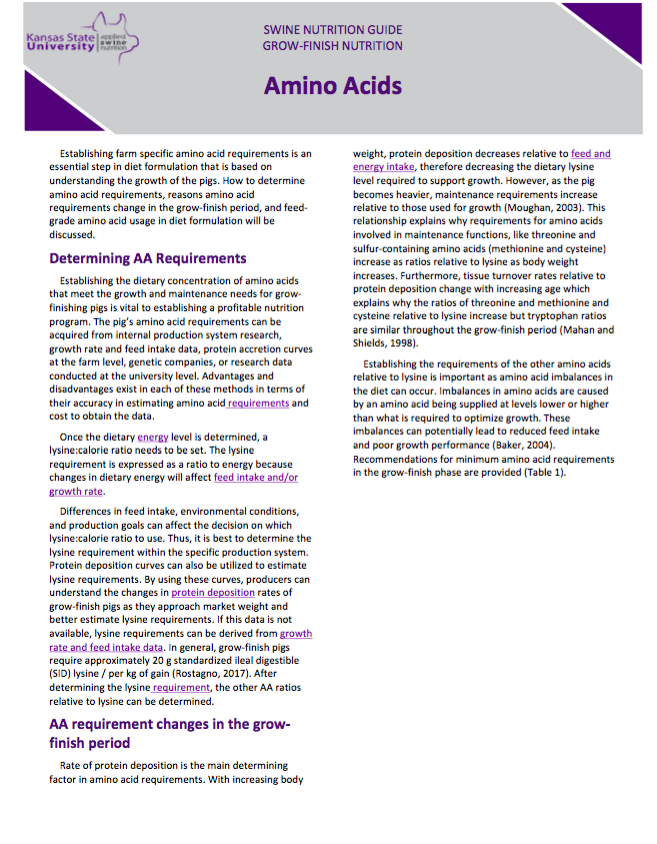Determining AA Requirements
Establishing the dietary concentration of amino acids that meet the growth and maintenance needs for grow-finishing pigs is vital to establishing a profitable nutrition program. The pig’s amino acid requirements can be acquired from internal production system research, growth rate and feed intake data, protein accretion curves at the farm level, genetic companies, or research data conducted at the university level. Advantages and disadvantages exist in each of these methods in terms of their accuracy in estimating amino acid requirements and cost to obtain the data.
Once the dietary energy level is determined, a lysine:calorie ratio needs to be set. The lysine requirement is expressed as a ratio to energy because changes in dietary energy will affect feed intake and/or growth rate.
Differences in feed intake, environmental conditions, and production goals can affect the decision on which lysine:calorie ratio to use. Thus, it is best to determine the lysine requirement within the specific production system. Protein deposition curves can also be utilized to estimate lysine requirements. By using these curves, producers can understand the changes in protein deposition rates of grow-finish pigs as they approach market weight and better estimate lysine requirements. If this data is not available, lysine requirements can be derived from growth rate and feed intake data. In general, grow-finish pigs require approximately 20 g standardized ileal digestible (SID) lysine / per kg of gain (Rostagno, 2017). After determining the lysine requirement, the other AA ratios relative to lysine can be determined.
